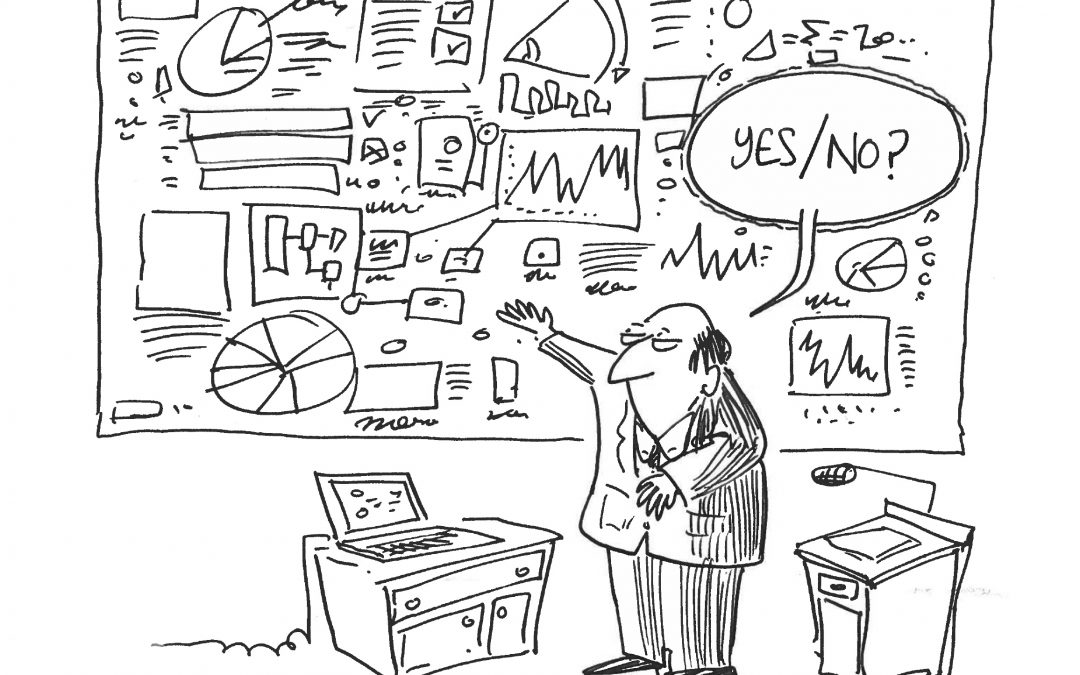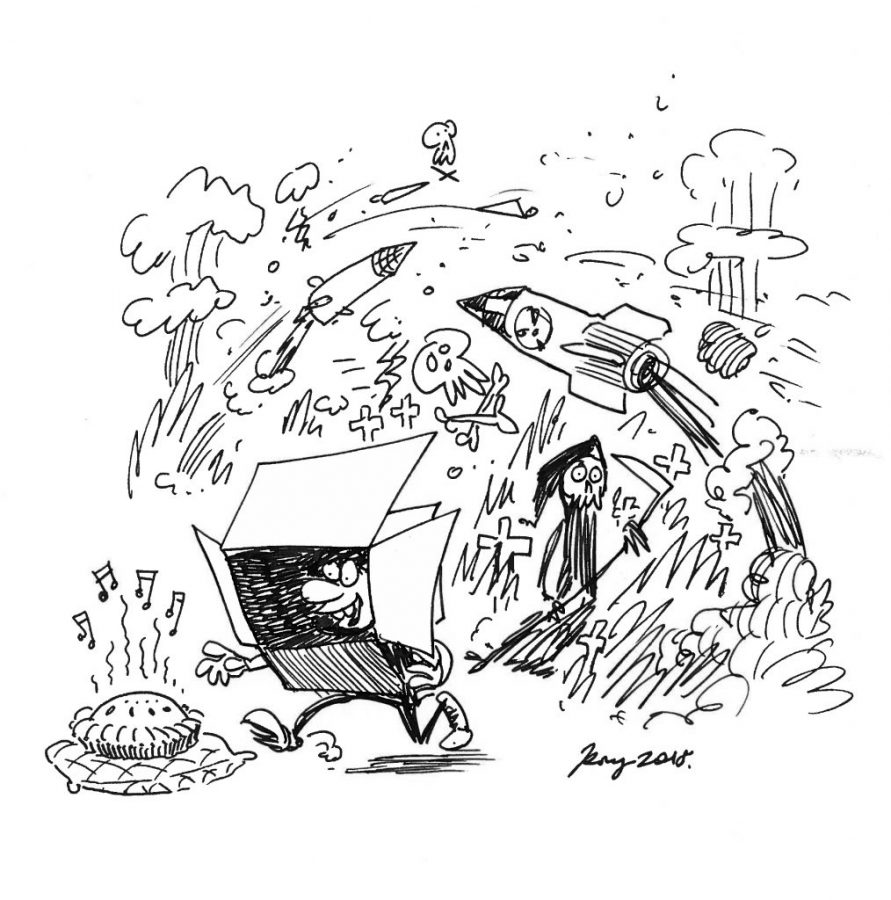Typically, we think we’re better at solving problems than we are. Our efforts are sabotaged by our own cognitive biases. These can be overcome if we follow a disciplined method. But how might we do that? What tools can we use to be better at solving problems?
Why does this matter?
An uncertain and dystopian prediction of the future lies ahead of us with the rise of AI. Job security will become increasingly about our ability to solve complex problems. For us to remain effective and creative when faced with a new challenge. For us to have the right tools for tackling increasingly complicated problems in our jobs.
Jumping to solutions
Everyone loves this part of problem solving. As groups, as individuals, as a conversation over coffee. Lets sit down, hash it out and ideate this sucker! Research and investigation are boring. Ideas are fun!
This Clip from Office Space, 1999 is an example of a bad solution to an undefined problem. Of the perils of jumping to conclusions. Quite literally…
N.B. if you haven’t watched Office Space you should. If this film recommendation is the only practical thing you take away from this article. Reading this article will have been worthwhile.
Why do we skip ahead?
When faced with a big challenge or problem to solve. We typically aren’t given the luxury of infinite time and resources to take a leisurely approach. We are serious business people with time, productivity and efficiency pressures. Do we really have the time to carefully define and analyse the problem?
My argument would be, do we have the time or resources to find out further on down the line a critical piece of the puzzle that we missed?
Ultimately, it’s about striking a balance. It’s about putting structure and rigour into our processes to give us the confidence to proceed to solutions.
“If I had an hour to solve a problem I’d spend 55 minutes thinking about the problem and 5 minutes thinking about solutions.”
— Albert Einstein
System 1 versus System 2 thinking
In Daniel Kahneman’s bestselling book, Thinking, Fast and Slow, he describes two systems of thought we use.
System 1 thinking
- Our minds are hardwired to think fast.
- We focus in on a tiny bit of information and use it to weave a story that makes sense.
- We use that story to jump to a conclusion that we just know will work.
System 2 thinking
- This is a slower, more deliberate, and more structured process.
- We look to better understand the problem.
- We are more effective and exhaustive with selecting the tools we want to use to understand the problem.
- We use these tools to gather more information before we go into solution generation mode.
Falling into the expertise trap
We do the jobs we do here because we are experts. We are good at what we do and have a wealth of experience to back it up. We are all armed with a set of tools to tackle challenges that face us.
But our backgrounds and experience can also limit us. We follow predictable patterns in respect to the solutions we consider and the details we examine. It can mean we examine the problem through a narrow lens. That we are over reliant on a limited tool set to provide solutions.
“I suppose it is tempting, if the only tool you have is a hammer, to treat everything as if it were a nail.”
— Abraham Maslow
Stop, Collaborate and Listen
As Vanilla Ice was clearly explaining. Collaboration in business is key to solving complex problems. At least I assume that’s what he was trying to tell us…
The first step in avoiding the expertise trap is to recognise that you probably don’t have all of the tools or knowledge in you to solve the problem.
The solution, is to recruit people who can help you. People with complimentary skills and knowledge.
“None of us is as smart as all of us.”
— Ken Blanchard
Analogical reasoning
When we are faced with a novel situation. We tend to seek comparisons from past experience to make it feel less unfamiliar. This is reasoning from analogy. It helps us avoid feeling overwhelmed by novelty.
- Have I seen a problem like this before?
- If I have, what worked with solving that problem before?
- If it worked then, it should work now, right?
A case of mistaken identity
The risk is where we do this from the start. From a place where we don’t yet understand it at a deep level. When we do this we can make surface level analogies.
It “looks” the same. But is it really?
We try something that worked somewhere else and are surprised when it doesn’t work as expected. We fall into an obvious and easily avoided trap.
So how can we avoid this trap?
A four-step process to avoiding common pitfalls
We can avoid a lot of common issues by using a structured framework to help us explore the problem in more detail before we try and solve it.
1. Stating the problem
- Have you defined it fully?
- What’s the trouble?
- What are the symptoms?
- What would define success?
- What are the constraints we are operating under?
- Who owns the problem?
- Who are the key stakeholders?
We often skip straight to a hypothesis for a solution. We don’t test the validity of our assumptions, and instead go right into implementation mode.
We can fix this by asking and answering the above questions.
2. Structuring the problem
- What are the potential causes of the problem?
- What might cause the symptoms?
It’s important that we structure a problem for analysis. Take the time to identify the underlying causes, rather than focus in on tackling the symptoms.
3. Generating solutions
- What fixes could we do?
- What else might we try?
- What do we already have that might work here?
- How can we test and evaluate those solutions.
This is the fun bit everyone wants to do. People love to talk about their own ideas to solve a problem. We could… We might… But it’s important we don’t just skip to brainstorming.
We first need deep understanding of the underlying causes to validate any idea. Deep insight about feasibility and desirability for the organisation. To be careful not to sensor ourselves, but instead to evaluate ideas as a group.
4. Selling the solution
- Persuading the right people to buy into it.
- Demonstrating rigour and insight.
With a structure and narrative you can replay, this is easier. They will often have their own ideas. So it’s useful to be able to demonstrate the process and your structured approach. And even to put their contribution through that same model.
Choosing the right approach to solving the problem is important
When you have a theory
Not all problems have a clear root cause. Sometimes, having gone through steps 1 and 2; you still only have a list of what the potential causes might be. You still don’t know which are the root cause in this scenario. But if you are lucky you likely have a theory.
- Start with identifying all the possible causes.
- Identify which ones are operating (eliminate those that aren’t).
- Use that to solve.
When you don’t have a theory
Sometimes, despite being rigorous you still can’t identify one particular thing that is causing the problem. You are in a world of unknown unknowns…
When you don’t have a theory. Where do you begin?
Using design thinking to solve problems
Part two explores How design thinking can help solve complex problems

